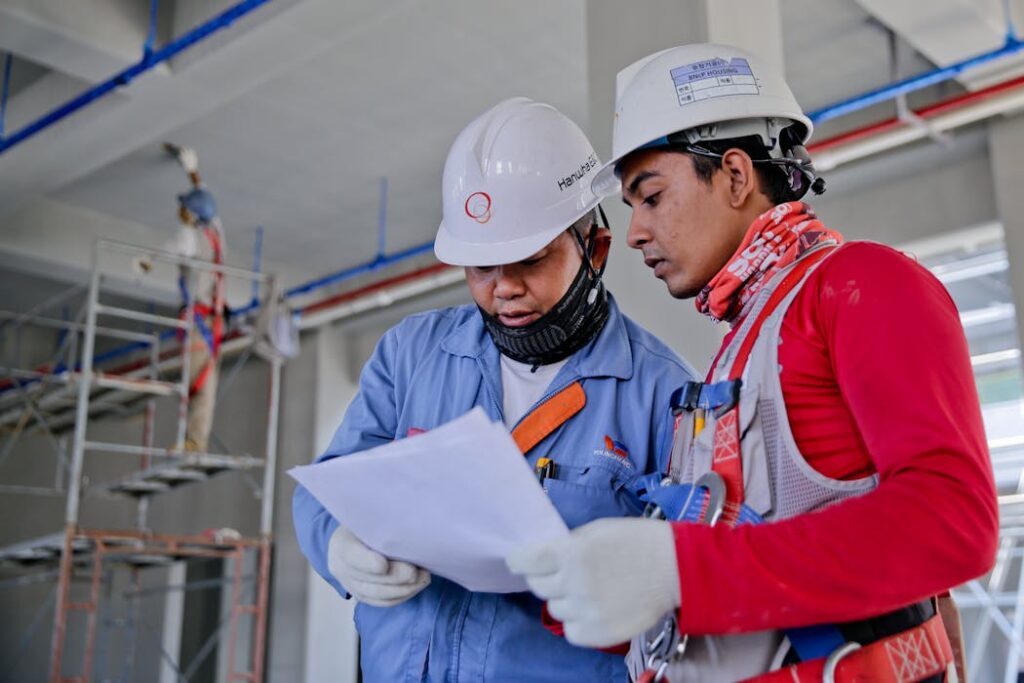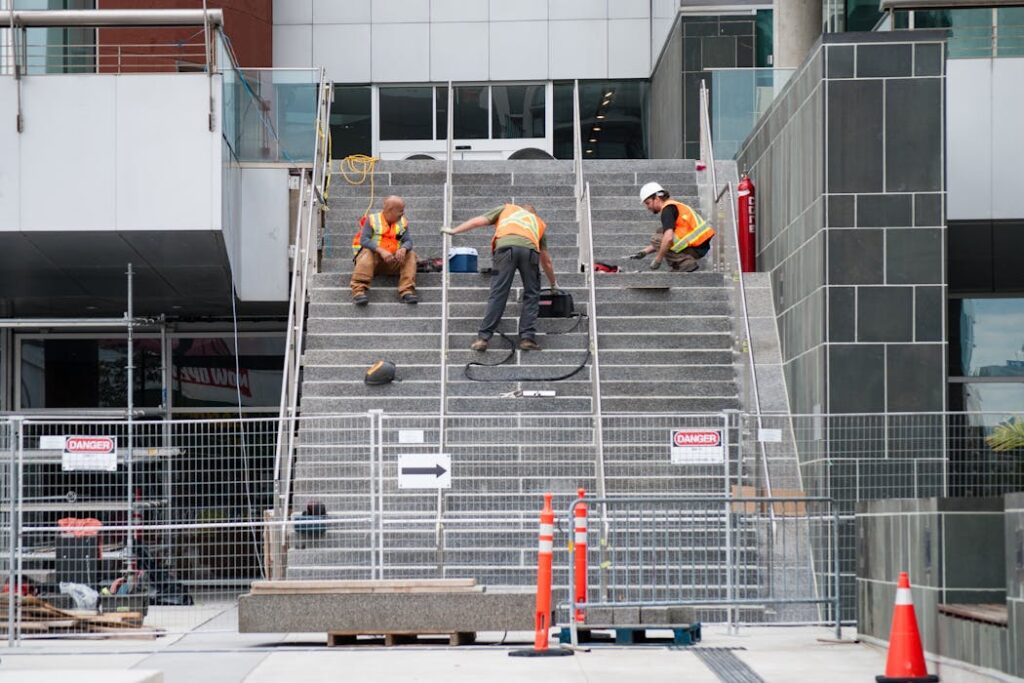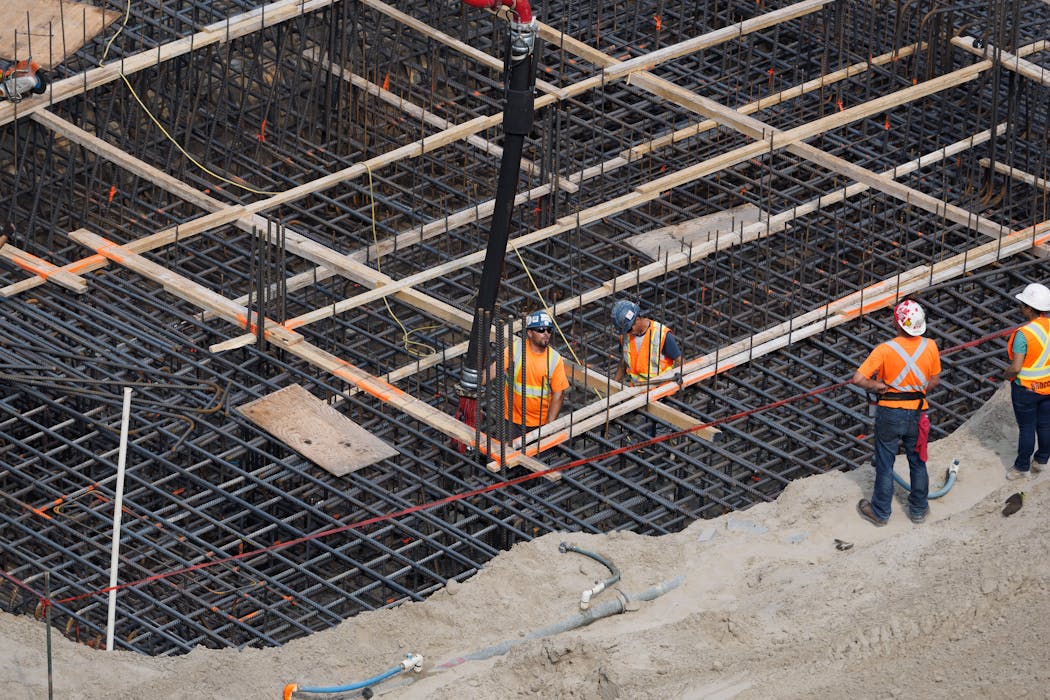The Canadian construction sector is busier than ever, but there aren’t enough hands on deck. Commercial developments and major infrastructure projects are booming, yet contractors from Toronto to Vancouver are struggling to fill jobs. In fact, according to Statistics Canada, employment in construction jumped 3.6% (58,000 jobs) year over year by January 2025, signaling strong demand.
Paradoxically, many projects still face delays due to a lack of skilled workers. From skilled labour shortages and high turnover to the ripple effects of automation and shifting immigration policies, multiple staffing challenges are converging at once.
This blog post dives into the latest Statistics Canada data and industry research to unpack these challenges, and more importantly, to highlight effective strategies (beyond the usual quick fixes) for HR professionals and business leaders to keep their projects staffed and on schedule.

Skilled Labour Shortages: A Perfect Storm
Widespread Job Vacancies
Across commercial and infrastructure projects, companies are finding it increasingly difficult to recruit tradespeople. In British Columbia, 72% of contractors report a shortage of skilled trades, forcing them to turn down projects and absorb rising costs. This isn’t just a regional problem, it’s nation-wide.
Statistics Canada data from last summer show the construction sector’s job vacancy rate was 4.2% in early 2024, well above the national average. At one point in 2022, vacancies hit record highs, and although they’ve tempered slightly, they remain elevated. The “help wanted” sign is still hanging on site gates across Canada.
Aging Workforce and Retirements
A major culprit behind the shortage is demographics. Many of Canada’s builders are graying, and retirement is looming. According to analysis in Policy Magazine, roughly 1 in 5 construction workers is set to retire in the next decade. In practical terms, that’s tens of thousands of seasoned electricians, carpenters, heavy equipment operators, and other experts exiting the workforce.
Some regions face an even steeper cliff—Ontario alone anticipates over 80,000 retirements by 2031, and smaller provinces like New Brunswick could see one-third of their construction workforce retire within four years. This “silver tsunami” is creating a vacuum of skills and experience that younger workers aren’t filling fast enough.
Demand Outpacing Supply
The timing couldn’t be worse: Canada has ambitious plans for new infrastructure and commercial builds, from transit lines and bridges to hospitals and data centres. Provinces like Ontario have targets to build 1.5 million homes by 2031 (to address the housing crisis), and a recent RBC report estimated over 500,000 additional construction workers are needed by 2030 to meet housing and infrastructure needs. Yet the industry is struggling to attract that workforce.
There are currently just under 1.6 million construction workers across Canada (about 8% of all jobs), and companies are still reporting “alarming” labour shortfalls despite record immigration levels. Circling back to journalist Aftab Ahmed’s piece in Policy Magazine reporting on the sector, in mid-2024, a sudden loss of 45,000 construction jobs within a month wasn’t due to lack of work, it was because more workers left the industry than joined. Put simply, demand for construction labour is sky-high, but the supply of qualified, willing workers isn’t keeping up.
Employee Retention Woes in a Competitive Market
Retention is as Critical as Recruitment
It’s not enough to hire new workers, construction firms are also struggling to hold onto the talent they have. Statistics Canada reports surveys show 28% of construction businesses identified retaining skilled employees as a major obstacle for the months ahead. In British Columbia, contractors say employee retention is among their top challenges (cited by 30% of firms), right alongside issues like tight margins and regulatory hurdles. When every crew member counts, losing people to burnout or competitors can set projects back significantly.
High Turnover and Burnout
Why are workers jumping ship in the middle of a labour shortage? One reason is the intense competition for skilled trades; good workers are frequently poached by other projects offering higher pay or better conditions. Another factor is burnout.
With chronic understaffing, many crews are stretched thin, clocking long hours to meet deadlines. Over time this can drive even veteran workers to seek a change. While more recent data suggest Canadians overall have become less likely to quit their jobs as the broader labour market cooled, employers can’t assume their people will simply stay put. Retention requires active effort.
What it Means for Employers
High turnover in construction hits harder than in many other industries. When a journeyman plumber or site supervisor walks away, they take specialized know-how with them that isn’t easily replaced. Projects may need to pause while a replacement is found or until remaining staff are up to speed.
For HR leaders, the data sends a clear message: retention strategies need to go hand-in-hand with recruitment. Paychecks are part of the equation, after all, sectors with the highest quit intentions tend to have the lowest wages, but money alone isn’t a silver bullet. Competitive benefits, safer working conditions, clear career progression, and positive company culture all play a role in convincing valued construction employees to stay for the long haul.
Automation in Construction: Threat or Opportunity?
The rise of robotics and automation is a double-edged sword for construction staffing. On one side, technology offers a tantalizing solution to do more with less human labour. For example, a Canadian developer recently unveiled “Val,” a robot that can do the heavy lifting of up to 20 workers, pouring and assembling concrete structures with a small technician team to operate it. Such innovations could ease the labour strain by taking on repetitive, strenuous tasks. They might also attract younger, tech-savvy workers into the industry by modernizing its image. Companies experimenting with automation report that if not for their robots, they’d need multiple extra crews to achieve the same output, a compelling case in a tight labour market.
On the other side, adoption of automation in construction has been slow and uneven. Unlike manufacturing, building sites are dynamic environments often run by smaller firms, making automation trickier to implement. Many construction businesses have been hesitant to invest in robots or 3D printing technology until recently. Now, faced with an aging workforce and a labour shortage that is set to worsen, the industry is feeling pressure to innovate or fall behind.
For HR professionals, automation introduces new staffing considerations: the skills profile of the ideal worker is evolving. There’s growing demand for tradespeople who are comfortable working with digital tools, drones, and robotics. Training existing staff to collaborate with automated systems (rather than be replaced by them) will be crucial.
The bottom line is that automation isn’t about replacing construction workers, it’s about augmenting the workforce and redirecting human effort to higher-value activities. Embracing technology can reduce labour-intensive grunt work and improve safety, potentially making construction careers more attractive and sustainable in the long run.
For more on the strategic opportunities AI unlocks for HR, tune into this week’s episode of What the FTE?, a podcast where we explore the tough questions surrounding the future of work, risk management, and employee experience. Certn’s CEO, Andrew McLeod, sits down with Steve Cadigan, LinkedIn’s first Chief HR Officer and a renowned talent advisor, to discuss AI as a strategic tool to enhance talent management and organizational performance.

Immigration Policies and the Construction Workforce
Immigration has long been a safety valve for Canada’s construction labour needs, and its importance is only increasing. Immigrants already make up a significant share of the construction workforce, and targeted immigration is one of the few ways to quickly inject skilled tradespeople into the labour pool. However, policies haven’t always kept pace with industry needs. Even as Canada met or exceeded record immigration targets in recent years, construction employers still couldn’t find enough qualified workers. This suggests that simply increasing immigration numbers isn’t sufficient; who is being brought in and how fast their credentials are recognized matters greatly.
New Initiatives in 2025
The federal government is responding to these concerns with more nuanced measures. In March 2025, Immigration Canada announced a series of steps aimed squarely at supporting the construction industry. These include convening a new advisory council with industry and unions to pinpoint labour needs and craft dedicated immigration pathways, fast-tracking the regularization of out-of-status construction workers, and removing red tape for foreign skilled trades apprentices. Notably, a temporary policy will now allow foreign construction apprentices to complete their training in Canada without a study permit, enabling them to enter the workforce faster. This is a direct effort to funnel much-needed talent into commercial and infrastructure projects without unnecessary delays.
Aligning immigration with industry needs. Construction leaders have been calling for exactly this kind of alignment. Industry surveys emphasize that government must “fast-track training programs and align immigration policies with industry needs” to alleviate the skilled worker crunch. That means prioritizing visas for trades like electricians, framers, heavy equipment operators and others in chronic short supply. It also means ensuring new Canadians can seamlessly transition into construction roles—through credential recognition, language support, and placement programs—rather than ending up in unrelated jobs.
For HR managers, immigration policy shifts are worth watching closely. When the government creates a new pathway for tradespeople abroad or grants work permits to undocumented workers domestically, it can open a valuable talent pipeline. The key is for businesses to proactively tap into these programs (for instance, by partnering with immigration agencies or advertising roles overseas) to capture eager skilled immigrants.

Beyond Band-Aid Solutions: What Actually Works?
After years of grappling with labour shortages, it’s clear that no single tactic will magically fix the construction staffing crunch. Simply dangling higher wages, for example, hasn’t solved the problem, construction wages have been rising faster than the overall economy and now average over $37/hour in parts of Canada, yet the shortage persists. Likewise, relying on a steady flow of newcomers or hoping older workers delay retirement can only go so far. It’s time to move beyond the common knee-jerk solutions that often fall short.
So, what actually works to build and sustain a construction workforce?
The data and expert insights point to a multi-pronged approach:
- Invest in training and apprenticeships: Employers and governments need to significantly ramp up training programs to grow the domestic talent pipeline. This means funding more apprenticeship slots, trade school programs, and on-the-job training opportunities. Fast-tracking training, an idea echoed by industry leaders, can help new workers become job-ready quicker. Creative initiatives like bootcamps for transitioning workers from other sectors (or even from the military) can also bolster the ranks. Building skills internally is a slower burn solution, but it’s a reliable way to secure talent in the long term.
- Improve retention through engagement: Given how costly and disruptive turnover is, doubling down on retention might yield the fastest wins. Construction firms are exploring ways to become “employers of choice” in an industry not exactly known for glamorous perks. This could involve better safety practices, offering career progression paths (e.g. helping a laborer become a licensed tradesperson), mentorship programs, and fostering a more inclusive work culture. Little things like recognizing employee achievements or providing flexible schedules during slow periods can boost loyalty. The goal is to make your crew see a future with the company. As one metric, tracking your voluntary turnover rate and surveying employees can reveal why people stay or leave, and inform retention strategies.
- Embrace technology and modern methods: Rather than viewing technology as a threat to jobs, successful firms leverage it to alleviate the labour strain. Modular construction and off-site prefabrication, for instance, can reduce on-site labour needs and speed up timelines. Robotics, drones, and AI-powered tools can handle repetitive or dangerous tasks, allowing your human workers to focus on skilled work that truly requires their expertise. Adopting construction management software can also streamline workflows and cut down wasted labour hours. These innovations can boost productivity per worker – essentially doing more with the team you have – and make construction jobs more attractive to younger recruits who expect a tech-forward workplace.
- Tap underrepresented talent pools: A fresh perspective on recruiting is crucial. While the industry has traditionally drawn from a limited demographic, there’s enormous potential in underrepresented groups. Women, for example, comprise a small fraction of the construction workforce, especially in trades roles. Programs that encourage women into trades, provide mentorship, and ensure worksites are free of harassment can expand the talent pool. Similarly, engaging Indigenous communities, veterans, and new immigrants through targeted outreach can uncover motivated candidates. Some companies are partnering with community colleges and even high schools to promote trades careers to diverse youth early on. Broadening the recruitment lens beyond the “usual suspects” will be key to filling those boots on the ground.
- Collaborate and plan for the future: Construction firms, industry associations, and government agencies must continue working together on this crisis. Joint initiatives, like the advisory council on construction immigration or regional training consortiums, help align efforts. From an HR standpoint, workforce planning needs to be strategic and long-term. Use the data at hand to forecast your retirement cliff (who in your crew is likely to retire in the next 5-10 years?), project future project needs, and develop succession plans. For example, if you know a third of your electricians will retire by 2030, start mentoring apprentices under them now so critical knowledge gets passed down. Business leaders should also advocate for policies that support workforce growth, whether that’s pushing for more infrastructure investment (which often comes tied with training funds) or simplified accreditation for foreign-trained workers.
Data-Driven Insights: What HR and Business Leaders Should Take Away
The labour data and trends in construction aren’t just an academic exercise, they carry important lessons for those managing talent in this field. First, the challenge is here to stay. With an aging workforce and years’ worth of project commitments ahead, staffing pressures won’t magically disappear with the next economic cycle. HR professionals should plan accordingly, treating recruitment and retention in construction as a persistent strategic priority, not a temporary headache.
Second, balance short-term fixes with long-term solutions. You may need to deploy quick remedies (e.g., overtime hours, hiring bonuses, subcontracting, etc.) to meet immediate project deadlines. But don’t let those stopgaps replace building a sustainable workforce pipeline. The companies that thrive will be those who simultaneously address today’s needs and tomorrow’s risks.
Lastly, be open to change. The construction sector has a reputation for “doing things the way they’ve always been done.” The current labour crunch is forcing a reckoning with that mindset. Whether it’s adopting new hiring practices, integrating automation, or redefining what a construction worker looks like, innovation in HR can be just as important as innovation on the job site. The data suggests that a status quo approach, waiting for more people to show up, isn’t going to cut it. Proactive, creative, and evidence-based workforce strategies are the order of the day.
Actionable Recommendations for Hiring, Training, and Workforce Planning
For HR professionals and business leaders in construction, here are concrete steps to consider in 2025 and beyond:
- Conduct a Workforce Audit: Start with data. Map out the age, skills, and tenure of your current workforce. Identify roles at high risk of vacancy (due to retirement or turnover) and prioritize those in your hiring and training plans. Use industry forecasts (e.g., retirement rates, regional demand) to inform your recruitment targets.
- Strengthen Your Employer Brand: In a market where candidates have options, make your company stand out. Highlight what makes your projects exciting? Are you using cutting-edge technology, building iconic structures, or offering accelerated apprenticeships? Promote success stories of employees who grew their careers with you. A strong reputation in the trades community can draw applicants to you even when talent is scarce.
- Leverage Government Programs: Stay abreast of government initiatives addressing the labour shortage. For example, take advantage of the new immigration pathways for trades or the foreign apprentice study permit exemption. Similarly, look into wage subsidies or grants for hiring apprentices (many provinces offer these). These programs can significantly offset the cost and effort of bringing on new workers.
- Build Partnerships: Don’t go it alone. Partner with trade schools, technical colleges, and unions to create a direct talent pipeline. This could mean sponsoring apprenticeship classes, co-designing curriculum to suit your specialized needs, or hosting job fairs and site visits for students. Industry associations can also facilitate collaboration. For instance, sharing apprenticeship graduates among member companies to ensure consistent work and training. A collaborative approach helps ensure a steady flow of qualified people into the industry.
- Innovate on the Job Site: Encourage your project managers to pilot productivity-boosting methods. Could parts of your building be prefabricated off-site? Is there software to digitize a process that’s eating up labour hours? Implementing these improvements can reduce the total number of workers you need without sacrificing output. Importantly, involve your crew in these decisions—training them on new tools and soliciting their feedback will make tech adoption smoother and more effective.
- Prioritize Safety and Well-Being: One often overlooked factor in retention is the physical and mental toll of construction work. Ensuring strict safety protocols and investing in equipment that reduces injury risk isn’t just morally right, it keeps people on the job. Consider initiatives like offering rotations for particularly strenuous tasks, providing access to mental health resources, or organizing schedules to allow for work-life balance (where feasible). When workers feel cared for, they are far less likely to leave for a competitor, and far more likely to refer others to your company.
By taking these actions, construction employers can start to turn the tide on the labour shortage, or at least prevent it from derailing their projects.
The challenges are undeniable: a shrinking skilled labour pool, fierce competition for talent, and an industry in flux due to technology and policy shifts. Yet, as we’ve seen, there are also solutions emerging from every corner – from government immigration tweaks to grassroots training efforts on job sites.
To sum it up, the Canadian construction sector’s staffing crunch is a complex puzzle, but it’s one that can be solved with a forward-thinking and people-centred approach. The data tells a story of urgency, but it also points to where interventions can make a difference.
For HR professionals and business leaders, the mandate is clear: build the foundations of your future workforce now. Just as a skyscraper or highway requires careful planning and strong fundamentals, so does your talent strategy. With the right mix of innovation, collaboration, and commitment to your people, you can weather this storm and lay the groundwork for sustained growth in the booming years ahead.
These insights on Canada’s construction sector are brought to you by Certn, the country’s leading online background check provider for instant ID verification and fast, reliable criminal record checks. Learn more about how Certn can help streamline your hiring at certn.co.





